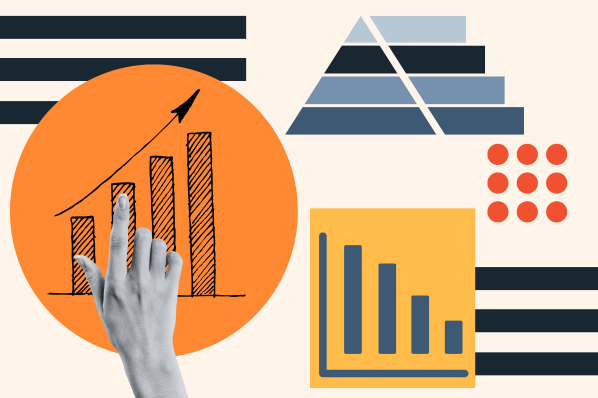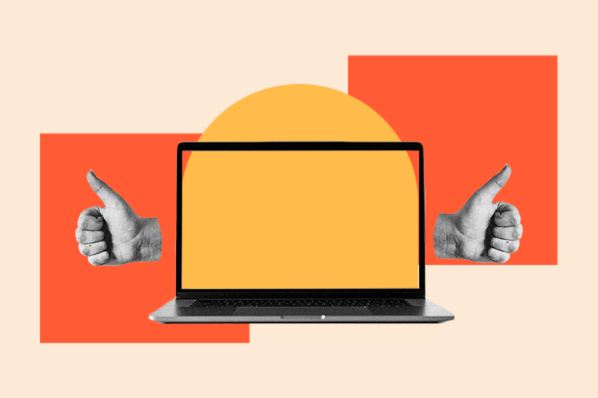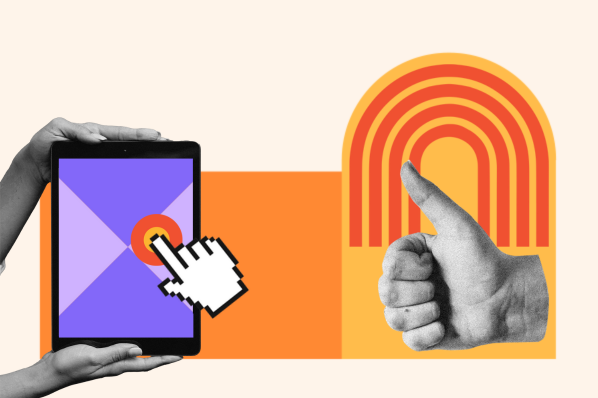Meaning, information is gathered by watching consumers use products or services in the course of their normal, everyday routines. This information is then analyzed and applied in the design process.
Empathetic design is ideal for products or services that are not well understood by users — or that are overly familiar and have established work-arounds that users have hacked together. That’s because empathetic design can uncover needs that users don’t even recognize as needs, or don’t believe can be met.
This set of techniques also avoids common obstacles that arise in traditional market research methods, like focus groups and surveys. Obstacles include respondent’s tendency to give expected answers in an attempt to please the researcher or avoid embarrassment, and the inevitability of researchers introducing their own bias in questioning.
Through empathetic design, market and product researchers and developers can get answers to the following questions:
- Why and when do customers use your product or service? By observing the circumstance in which customers use your product or service, you can compare how customers actually use your product versus how it was intended. For example, the makers of Cheerios expected customers to primarily eat it for breakfast. But when they went out in the field, they discovered that the cereal was frequently used as a transportable snack. By discovering unanticipated usage patterns, you can identify opportunities to enhance or redesign your product and even enter new markets.
- How does your product or service fit into your users’ unique processes and routines? Let’s say your product is a software tool. By observing customers in their own environment, you can see what other software tools they have and how they use them in relation to your own tool. If they use multiple tools at once, maybe an integration would enhance your product. Or maybe you notice a competitive advantage your tool could have over another.
- Are users reimagining, customizing, or combining your products to serve their own unique purposes? Let’s say your company sells household cleaners. Through empathetic design, you might notice users combining multiple cleaners into concoctions for a unique purpose, like cleaning their curtains. Such observations could lead to new product development or rebranding.
- Does your product or service have any peripheral or intangible attributes, or emotional appeal? Through empathetic design, you might observe customers smelling your product or remarking how it makes them feel. This will help you identify any intangible attributes your product has, or emotional responses it elicits. For example, say your product is a skincare cleaner. You might observe users rubbing it against their palms in an attempt to get it to foam up, and remarking that the suds help make them feel more clean. This can be a quality you promote in ads and other marketing collateral as a result, which you might not have thought to highlight without empathetic design.
- What problems with your products or services do customers encounter? Often, these are problems that customers don’t think can be solved, or don’t even recognize as problems. Once you’ve identified them, you can figure out how to solve these problems by enhancing your product or service, or creating new ones.
What makes empathetic design so effective is that customers who need something done are connected to the researchers and developers who have the knowledge and resources to actually get it done.
Empathy in Design Thinking
Empathy is a foundational principle of design thinking, which is a user-based approach to problem-solving that combines spontaneous, creative thinking with extensive, hands-on testing.
Empathetic design, in particular, is a great first step in design thinking. It can help you start to identify the needs and goals of your target users and figure out which ideas need more testing before a company commits itself to a development or redesign project.
Remember that empathetic design is about more than imagining yourself in a user’s shoes. It’s not just a mind exercise. It requires actual observation in the user’s personal environment. Let’s walk through the process below.
Empathetic Design Process
The empathetic design process can be broken down into five stages, which mirror the design thinking process. Below we’ll draw attention to what makes each stage of the empathetic design process unique, starting with observation and ending with prototyping.
Step One: Observing
To kick off empathetic design, an interdisciplinary team should be sent into individual’s homes or offices to observe them using the product or service throughout their normal, daily routines. These individuals can be customers or non-customers.
Sending an interdisciplinary team is another key differentiator of empathetic design. Having a team composed of, for example, an engineer, designer, and UX researcher, will result in different observations and richer data.
Step Two: Gathering Data
Another differentiator of empathetic design is its reliance on observation rather than questioning. So the interdisciplinary team should come in with their own list of questions that prompts them to note certain behaviors of the users. They may ask a couple open-ended questions like, “Why are you doing that?” but they should primarily rely on visual, auditory, and sensory cues.
They may note the users’ body language, unsolicited comments, any challenges the user encounters, and any workarounds the user has implemented to solve those challenges.
Step Three: Brainstorming
It’s time to analyze the data to understand any articulated and unarticulated needs the user has, and brainstorm solutions. At this stage, it can be helpful to turn the text and numbers gathered in the previous stage into visual representations of possible solutions. That’s why brainstorming sessions should have large notepads, whiteboards, and other materials for doodling.
Step Four: Prototyping
At this stage, try to narrow down your ideas to one or two of your biggest priorities. Is there a solution that will be quick and cheap to roll out? Is there an obvious pain point affecting the majority of users that needs to be solved right away? Once you’ve decided on what your most important solution is, develop a prototype. A prototype can take the form of a paper model, a 3D print of a product, a model with Lego bricks, or a slide deck, among other forms.
You can learn more about prototyping in the post, Prototype vs. Wireframe: How to Use Both in Design.
Step Five: Testing
Now that you have a prototype, get users to interact with it so you can collect more data and feedback. Once you’ve amassed enough data, you can create an improved version of the prototype. You can iterate this step until you’re satisfied, then move on to tackling other problems in the design process.
Empathetic Design Examples
To help you understand how you can implement empathetic design in your design process, let’s look at some real-world examples.
Intuit’s Follow Me Home Program

Intuit is the company behind QuickBooks, TurboTax, and Mint. These financial tools enable more than 37 million customers to track their expenses, handle payroll, and pay their personal and business taxes.
Since 1989, Intuit has run a “Follow Me Home” program, which allows the company to observe customers in their homes, offices, and other locations to determine how they use the company's products in their natural habitat. The goal is to glean not only how they use the product, but what they like, what they don’t like, and what challenges they may encounter. These insights, combined with other customer feedback, result in actual changes and updates to the products. For example, the 2006 version of Quicken had 121 customer-recommended improvements, according to an article in Fast Company.
OXO’s Good Grips Line

OXO is a manufacturing company of kitchen utensils, office supplies, and houseware. In 1990, it released its Good Grips line, which revolutionized consumer products.
The Good Grips line was designed to make culinary tools easier to use for people with arthritis — and all people as a result. Through observation, as well as interviews, OXO researchers and designers discovered that different types of actions — like pulling, pushing, or brushing, for example — required a different type of handle than traditional tools offered. These handles needed to be larger and made of a material that was better suited for gripping. The result was the OXO handle, recognized for its distinctive ergonomic form and signature non-slip grip.
Anheuser-Busch’s Budweiser Black Crown

Anheuser-Busch Companies is an American brewing company best known for its beer, Budweiser.
In 2012, the company asked its 12 brewmasters to create their own unique version of Budweiser (later, this became known as Project 12). Of 12 recipes, they brewed six beers for national sampling at dozens of events. At the events, brand ambassadors observed U.S. beer drinkers and asked them to describe the taste, freshness, style, and flavor of the six beers and choose their favorites. Through this observation and feedback, they rolled out a new golden amber lager called Budweiser Black Crown.
Empathy As a Competitive Advantage
Empathetic design can help provide users with what they want and need before they even ask. The enhancements to or new products and services that result from empathetic design can be huge competitive differentiators. If you don’t incorporate empathetic design into your design thinking, then you risk falling behind and playing catch up in your market.
User Experience
.png?width=112&height=112&name=Image%20Hackathon%20%E2%80%93%20Square%20(10).png)



![How to become a UX designer, a step-by-step guide [expert tips]](https://53.fs1.hubspotusercontent-na1.net/hubfs/53/become-a-ux-designer-1-20240731-321437.webp)


![How to Add a Parallax Scrolling Effect to Your Website [Examples]](https://53.fs1.hubspotusercontent-na1.net/hubfs/53/scroll-Aug-11-2023-05-24-08-8793-PM.png)

![20 UX Design Examples Hand-Picked by Experts [With Analysis]](https://53.fs1.hubspotusercontent-na1.net/hubfs/53/ux-design-examples-1-20250404-8425368.webp)
